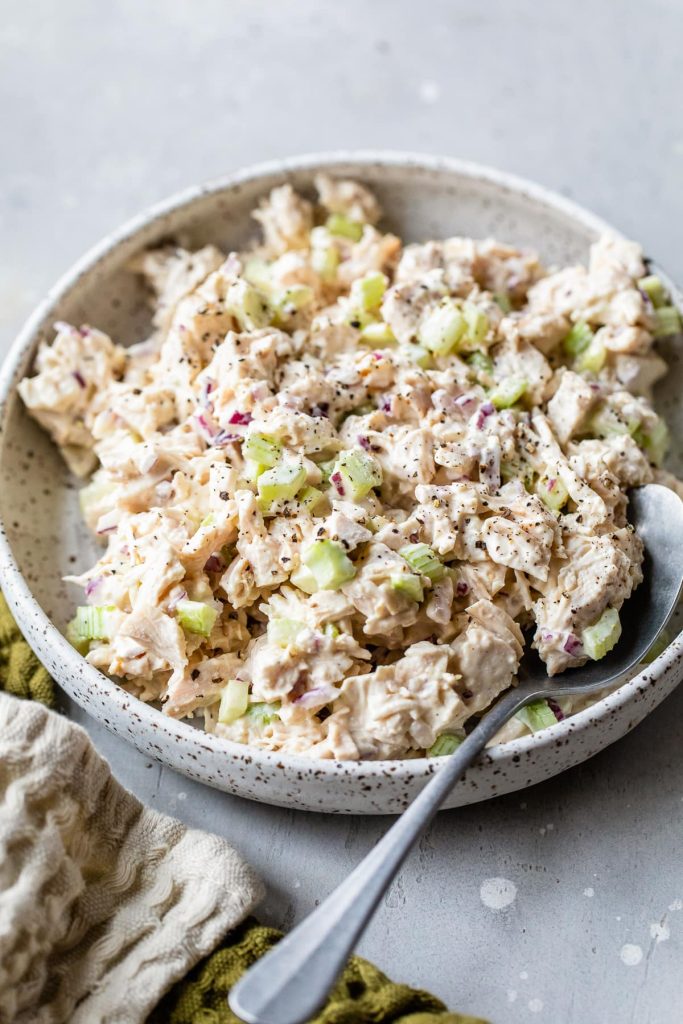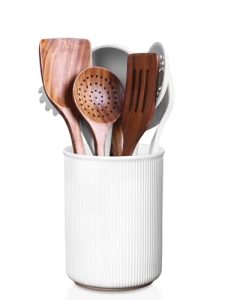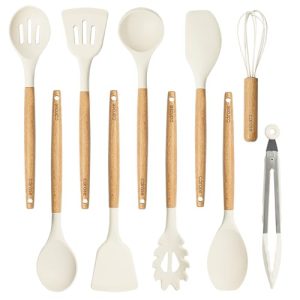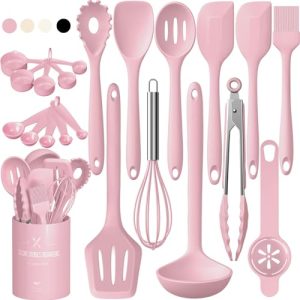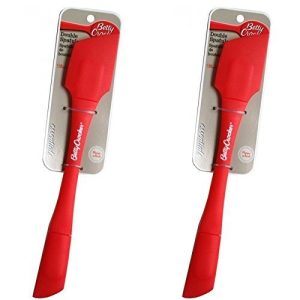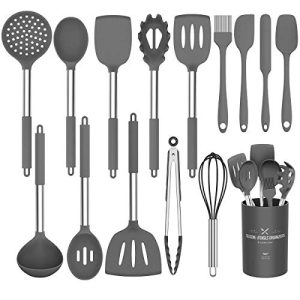Do you find yourself struggling to make the perfect chicken salad? You’re not alone.
The secret to a delicious chicken salad lies in how you cook the chicken breasts. Get this right, and you’re halfway to a mouthwatering meal. Imagine biting into tender, juicy chicken pieces that complement the crunch of fresh vegetables and the creaminess of your favorite dressing.
Sounds good, right? You’ll discover the best way to cook chicken breasts specifically for chicken salad, ensuring every bite is packed with flavor and the right texture. Stick around, and you’ll be impressing friends and family with a chicken salad that’s not just good, but unforgettable.
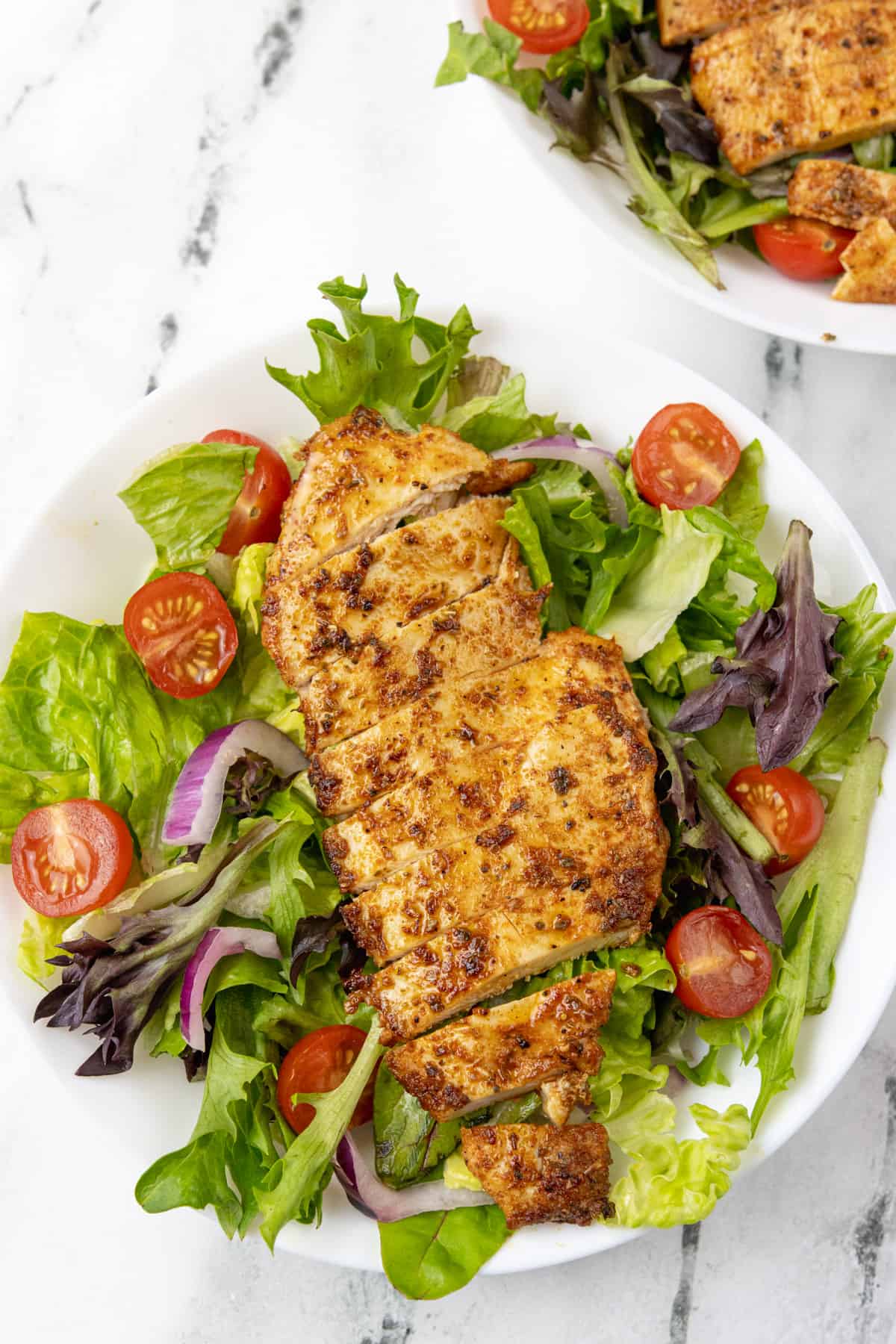
Credit: meganvskitchen.com
Choosing The Right Chicken Breasts
Choosing the right chicken breasts is the cornerstone of a delicious chicken salad. The quality of your chicken can make or break the dish. Have you ever wondered why some salads taste better than others? The secret often lies in the choice of chicken breasts. Let’s dive into what you need to consider.
Fresh Vs. Frozen
Fresh chicken breasts are often more flavorful and tender. They cook evenly, resulting in a juicy texture perfect for your salad. If you’ve ever tried frozen chicken, you might notice it sometimes lacks that fresh taste. While frozen chicken is convenient, it can end up dry if not cooked properly. Are you ready to compromise on flavor for convenience?
On the flip side, frozen chicken can be a lifesaver when you’re short on time. It’s easy to store, and you can always have it on hand. Just be sure to thaw it properly. A slow thaw in the fridge overnight usually works best. This helps retain moisture, giving you a better texture.
Organic And Free-range Options
Organic chicken breasts come from chickens raised without antibiotics or hormones. This means you’re getting a cleaner and possibly healthier option. Not only is this better for you, but it can enhance the taste of your chicken salad. Have you ever tried organic chicken and noticed a difference?
Free-range chicken offers an ethical choice. These chickens are allowed to roam, leading to a better quality of life. This often translates into tastier meat. It might cost a bit more, but is the flavor worth it to you?
Choosing organic and free-range options can also be a way of voting with your wallet. Supporting these practices encourages better standards in the industry. Plus, you’re likely to impress your guests with the superior taste!
So, what’s your choice? Fresh or frozen? Organic or free-range? Your decision will shape the flavor and texture of your chicken salad. Remember, the right chicken breast is the first step to a delightful meal.
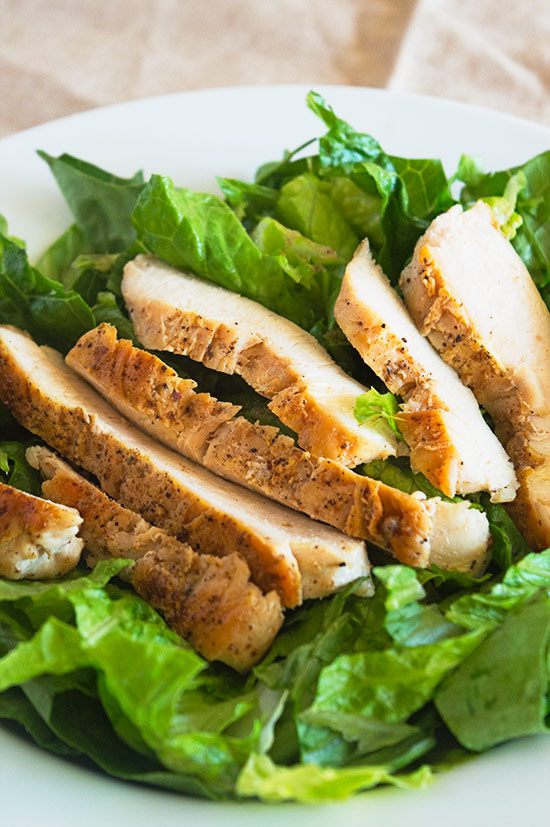
Credit: bakingmischief.com
Essential Kitchen Tools
Cooking chicken breasts for a salad can be simple and rewarding. Having the right kitchen tools makes the process easier and ensures perfect results. Essential kitchen tools not only save time but also help in achieving the ideal texture and flavor for your chicken salad. Let’s explore the most important tools to have at hand.
Knives And Cutting Boards
A sharp knife is crucial for preparing chicken breasts. It ensures clean cuts and precise portions. Use a chef’s knife for its versatility and ease of use. Pair your knife with a sturdy cutting board. Choose wooden or plastic boards for easy cleaning. This combination helps in maintaining hygiene and efficiency in your kitchen.
Thermometers And Timers
Cooking chicken to the right temperature is vital for safety. A meat thermometer is indispensable for this task. It confirms that your chicken is cooked thoroughly. Set timers to monitor cooking duration. Timers prevent overcooking and keep your chicken juicy. These tools together guarantee a perfectly cooked chicken breast.
Preparation Techniques
Preparing chicken breasts for salad takes skill and care. The right techniques enhance flavor and moisture. This ensures your salad is delicious and satisfying. Explore marinating and brining techniques for the best results.
Marinating For Flavor
Marinating infuses chicken with rich flavors. Use herbs, spices, and oils. Lemon juice or vinegar adds zest. Let the chicken soak for at least 30 minutes. This allows flavors to penetrate deeply. The longer the marinate, the richer the taste. Always refrigerate while marinating for safety.
Brining For Moisture
Brining keeps chicken juicy and tender. Mix water with salt and sugar. Add some spices for extra taste. Soak chicken breasts for 1 to 2 hours. This process prevents dryness during cooking. Rinse and pat dry before cooking. Brining ensures every bite is succulent.
Cooking Methods
Chicken salad is a versatile dish, perfect for any meal. The cooking method you choose can make a big difference in flavor and texture. Let’s explore some popular ways to cook chicken breasts for the perfect salad.
Poaching For Tenderness
Poaching is a gentle cooking method. It involves simmering chicken in water or broth. This keeps the chicken moist and juicy. Add herbs and spices for extra flavor. Keep the heat low to avoid tough meat. Poached chicken shreds easily, ideal for a creamy salad.
Grilling For Smokiness
Grilling adds a smoky flavor to chicken breasts. Marinate the chicken first for enhanced taste. High heat sears the meat, locking in juices. Use direct heat for a quick cook. Grilled chicken adds a bold taste to any salad.
Baking For Ease
Baking is a simple and convenient option. Season the chicken with salt, pepper, and herbs. Bake in the oven until cooked through. This method requires minimal attention. Baked chicken is versatile and easy to prepare. Perfect for a quick salad.
Checking For Doneness
Ensuring chicken breasts are perfectly cooked is key to a delicious chicken salad. Cook until the internal temperature reaches 165°F. This ensures tenderness and juiciness, enhancing the salad’s flavor.
Cooking chicken breasts perfectly for a chicken salad can elevate the dish to a whole new level. Ensuring the chicken is cooked just right is crucial to avoid any unpleasant surprises, like a dry texture or, worse, undercooked meat. Checking for doneness is an essential step that can make or break your culinary masterpiece. How can you be sure your chicken breast is cooked to perfection? Let’s dive into the details.Visual Cues
Visual cues are a straightforward way to gauge if your chicken breast is cooked. The exterior should be a pleasant golden brown, indicating a good sear. When you cut into the chicken, the juices should run clear, not pink. The inside of the chicken should not be translucent. It should appear white and opaque. If you see any pinkness, the chicken needs more cooking. Have you ever cut into a chicken breast and found it not quite done? It can be disappointing, but these visual checks can save you from that hassle.Using A Meat Thermometer
A meat thermometer is your best friend for ensuring perfectly cooked chicken. Insert the thermometer into the thickest part of the breast. The temperature should read 165°F (74°C), which is the safe internal temperature for poultry. Checking with a thermometer takes the guesswork out of cooking. It ensures your chicken is neither undercooked nor overcooked. Have you been hesitant about using a meat thermometer? It might just be the tool that transforms your cooking confidence. Implementing these strategies can make cooking chicken for your salad a breeze. You can enjoy tender, juicy chicken without any stress. Are you ready to try these tips next time you prepare your chicken salad?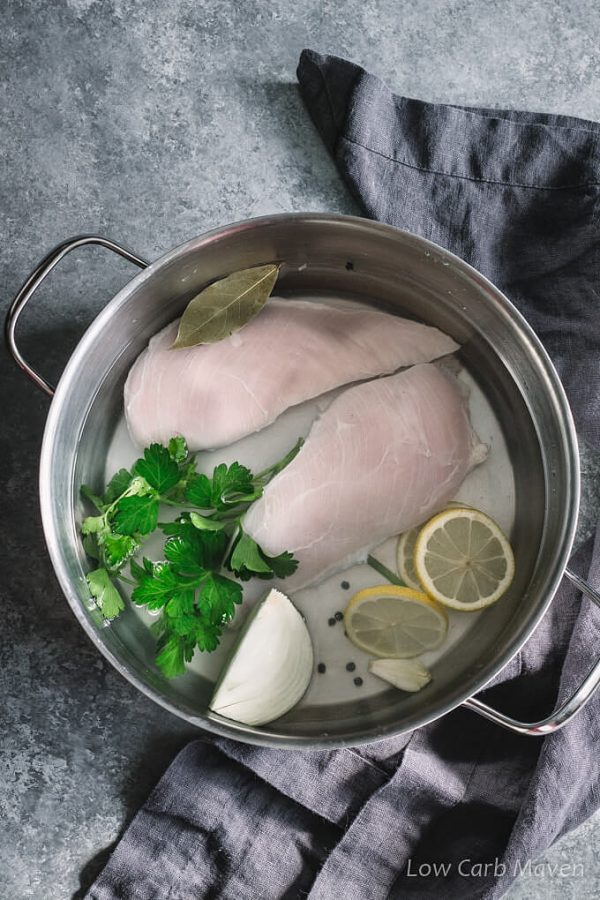
Credit: www.lowcarbmaven.com
Resting And Cooling
Resting and cooling are crucial for juicy chicken breasts in salads. After cooking, let them rest to lock in juices. Cooling ensures perfect texture and easy cutting for your dish.
Cooking chicken breasts to perfection is only half the battle when preparing a delicious chicken salad. Resting and cooling are crucial steps to ensure your chicken is juicy and flavorful. These steps might seem simple, but they can make a significant difference in your dish. Let’s dive into the details to get the best results.Retaining Juices
After cooking, your chicken breasts need to rest for about 5 to 10 minutes. This allows the juices, which have moved to the center during cooking, to redistribute throughout the meat. Skipping this step can result in dry chicken, which is not ideal for a salad. A simple tip: cover your chicken with foil while it rests. This keeps it warm without overcooking. Have you ever noticed how professional chefs always let their meat rest before cutting? It’s because they know the value of juicy, flavorful meat.Ideal Cooling Techniques
Once the chicken has rested, it’s time to cool it down properly. Cooling is essential before mixing it with other salad ingredients. Warm chicken can wilt the greens and alter the salad’s texture. Consider using a cooling rack to allow air to circulate around the chicken. This helps it cool evenly. Alternatively, you can slice the chicken and spread it on a plate, ensuring it cools quickly. Some people like to refrigerate their chicken for a short time. This not only cools it but also firms it up, making it easier to cut into uniform pieces. Have you tried cooling your chicken this way? Taking these steps in resting and cooling can elevate your chicken salad from ordinary to extraordinary. Remember, it’s the little details that often make the biggest difference. How will you ensure your chicken salad is unforgettable?Shredding And Dicing
For the best chicken salad, cook chicken breasts by shredding or dicing them. This enhances texture and flavor. Boil or bake the chicken to keep it tender and juicy.
Cooking chicken breasts for a chicken salad can elevate your dish. Shredding and dicing play an essential role in achieving the perfect texture. Proper techniques ensure even distribution and enhance flavor absorption. Shredded chicken offers a tender, fibrous texture. Diced chicken provides a bite-sized, uniform consistency. Both methods can transform your salad into a delightful culinary experience.Best Tools For Shredding
Using the right tools makes shredding easier. A stand mixer with a paddle attachment is quick and efficient. Place cooked chicken in the bowl, then turn on low speed. The chicken shreds within minutes. Forks are a traditional tool for shredding. Hold a fork in each hand and pull the meat apart. A hand mixer is another option. Place the chicken in a bowl and mix on low speed. The chicken will shred quickly and easily.Tips For Uniform Dicing
Uniform dicing enhances your salad’s presentation. Start with cooked, cooled chicken breasts. Cut the chicken into thin, even strips. Turn the strips and cut into small cubes. Use a sharp knife for clean cuts. Maintain consistent size for even cooking and flavor. Keep fingers tucked for safety. A cutting board with a groove helps collect juices. This prevents slipping and ensures precision.Flavor Enhancements
Enhancing the flavor of chicken breasts for salad elevates the dish. Simple additions can transform bland chicken into a flavorful delight. Let’s explore how herbs, spices, dressings, and sauces can enhance the taste.
Herbs And Spices
Fresh herbs add an aromatic touch to chicken breasts. Basil, thyme, and rosemary are excellent choices. They infuse the chicken with a fragrant flavor. Use dried spices like paprika or cumin for a deeper taste. These spices create a warm, earthy profile. Experiment with different combinations to find your favorite.
Dressings And Sauces
Dressings and sauces are essential for flavor-packed chicken salads. A simple olive oil and lemon dressing brings a zesty freshness. Yogurt-based sauces add creaminess and tang. Consider pesto for a rich, herby touch. Soy sauce or teriyaki can introduce an Asian flair. Mix and match to discover the perfect balance for your salad.
Storing Cooked Chicken
Cooking chicken breasts just right makes chicken salad delicious. Grilling or baking keeps the meat juicy and flavorful. Store leftovers in an airtight container in the fridge.
Storing cooked chicken properly can make all the difference in your culinary adventures. After mastering the art of cooking chicken breasts for a scrumptious chicken salad, preserving the leftovers is crucial. Whether you plan to use them the next day or want to save them for a rainy day, effective storage ensures freshness and safety. Let’s dive into the best practices for refrigeration and freezing, so your chicken stays delicious and ready for your next salad creation.Refrigeration Techniques
Refrigerating cooked chicken is a common practice, but doing it right is essential. Always cool your chicken completely before storing it. This prevents the growth of bacteria and keeps your refrigerator safe. Use airtight containers or wrap the chicken tightly in plastic wrap or aluminum foil. This keeps moisture in and odors out. Have you ever opened your fridge to a mix of smells? Proper storage can prevent that. Store cooked chicken in the coldest part of the fridge, ideally below 40°F (4°C). A simple thermometer can help you check your fridge’s temperature. How often do you actually check your fridge’s temperature?Freezing For Later Use
Freezing cooked chicken is a fantastic option if you want to plan meals ahead. Cut the chicken into smaller pieces before freezing. This speeds up thawing and keeps the texture intact. Use freezer bags or containers specifically designed for freezing. Remove excess air before sealing to prevent freezer burn. Have you ever tasted freezer-burned chicken? It’s not pleasant. Label your chicken with the date it was frozen. This helps you keep track and ensures you use it within three months for the best taste. Is your freezer a treasure trove of mysterious leftovers? By following these simple techniques, you can make the most of your cooked chicken breasts. Keep them fresh and ready for whenever your chicken salad craving strikes. Why not give it a try and see the difference it makes?Frequently Asked Questions
What Is The Best Way To Cook Chicken Breasts To Keep Them Moist?
To keep chicken breasts moist, marinate before cooking. Use a meat thermometer to avoid overcooking. Bake at 375°F for 20-25 minutes or grill on medium heat. Rest the chicken for 5 minutes after cooking to retain juices. Avoid high heat, which can dry out the meat.
What Are Some Common Mistakes People Make When Making Chicken Salad?
People often overcook chicken, making it dry. Using too much mayonnaise can overpower flavors. Adding too many ingredients can complicate the taste. Neglecting to season properly results in bland salad. Cutting chicken into inconsistent sizes leads to uneven texture.
What Cooking Method Is Best For Chicken Breast?
Grilling, baking, or pan-searing are excellent methods for cooking chicken breast. These techniques retain moisture and enhance flavor. Use a meat thermometer to ensure the internal temperature reaches 165°F (75°C) for safety. Season well for best taste.
Should I Wait For Chicken To Cool Before Making Chicken Salad?
Let the chicken cool before making chicken salad. Warm chicken can cause the salad to become soggy. Cooling enhances flavor blending and makes handling easier. Use chilled ingredients for the best texture and taste.
Conclusion
Cooking chicken breasts perfectly makes chicken salad delicious and satisfying. Choose fresh, quality chicken for the best results. Season with simple herbs and spices. Bake or poach to keep the meat juicy and tender. Avoid overcooking to maintain texture and flavor.
Rest the chicken before cutting to lock in juices. Use these tips to enhance your chicken salad experience. Enjoy a healthy and tasty meal every time. Now, you’re ready to make the perfect chicken salad. Remember, practice makes perfect. Happy cooking!
